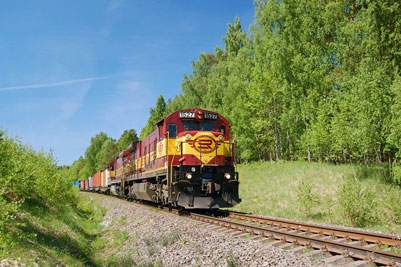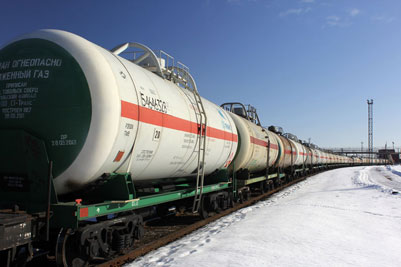Estonian rail freight carrier’s cargo volume reached 1.37 million tons in October
Posted: 27 November 2014 | | No comments yet
Estonian state-owned rail freight carrier EVR Cargo’s freight volume reached 1.37 million tons in October, increasing by 5.7 per cent year-on-year…


© Konstantin Menshikov
Estonian state-owned rail freight carrier EVR Cargo’s freight volume reached 1.37 million tons in October, increasing by 5.7 per cent year-on-year. The overall freight volume during the first ten months of the year remains 2.8 per cent short of last year’s same period, amounting to 12.7 million tons in total.


© Konstantin Menshikov
EVR Cargo’s chairman of the board Ahto Altjõe commented that October’s result was greatly influenced by the seasonality of the transit business in the region. “We are witnessing a slight reduction in the pace of decline of oil products freight volumes, which may be attributed partly to increased export volumes due to a lower world market price for oil,” noted Altjõe. However, there was a reduction in the freight volumes of most other commodities in October.
The volume of mineral liquid fuels increased by 30.6 per cent to 505 thousand tons and the volume of oil shale increased by 11 per cent to 288 thousand tons in October. The transport volume of fertilisers decreased by 6 per cent to 282 thousand tons year-on-year, the freight volume of chemical goods decreased by 14 percent to 102 thousand tons and the transport volume of dry bulk goods dropped 34 per cent to 56 thousand tons in October.
Container volumes hauled by EVR Cargo were up 9.9 per cent year-on-year in October, reaching 6545 TEUs in total. EVR Cargo has hauled 63 773 TEUs during the first ten months of the year, an increase of 25.4 per cent compared to last year. “The trend remains positive in container traffic, but the modest growth percentage is caused by the high comparison basis of last year,” noted Altjõe.
In October, Russia remained the main trade partner for EVR Cargo in railway freight with 736 thousand tons, increasing by over 40 per cent. Latvia’s share decreased to 53 thousand tons and Kazakhstan diminished to 146 thousand tons. Lithuanian volumes decreased to 37 thousand tons and Belarussian volumes increased to 39 thousand tons.


Image: EVR Cargo
The volume of transit freight reached 845 thousand tons in October, increasing by 13 per cent compared to last year’s result.
The total volume of freight hauled by EVR Cargo during the first ten months of the year stays 2.8 per cent below last year’s result at 12.7 million tons. The freight volume of mineral liquid fuels during this period has decreased by 10.6 per cent to 5.05 million tons. The freight volume of fertilizers has increased by 12.6 per cent to 2.77 million tons and the volume of chemical goods has increased by 3.3 per cent to 0.94 million tons. Oil shale transport has dropped by 2.7 per cent to 2.15 million tons and the volume of dry bulk cargo has been reduced by 16 per cent to 0.6 million tons. The share of transit freight increased by one per cent to 7.65 million tons during ten months, forming approximately 61 per cent of the total freight volume.
AS EVR Cargo was separated from Estonian Railways in 2012, the company serves its customers in Estonia on a 1229-kilometre long railway track as well as over the entire 1520-millimeter gauge railway network, stretching from Finland to the Black Sea and from the Baltic States to the coast of the Sea of Japan, covering all CIS member states. Rail cars are hauled to and from Russia and surrounding regions in block trains or shuttles, requiring less formalities and thus ensuring faster delivery times. The company also has its own fleet of more than 3300 wagons and 80 locomotives and offers rolling stock repair and maintenance services to its customers. The Estonian logistics hub has several competitive advantages: fully renovated railway infrastructure with more than 25 million tons of annual free capacity, modern port and terminal infrastructure, transparent costs and a business-friendly tax and economic environment.


